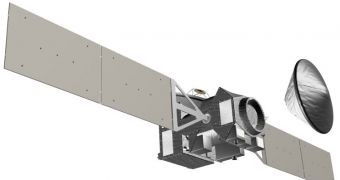A group of officials at NASA and the European Space Agency (ESA) announce that they have finally decided on the science component of a demonstrator vehicle, that will be a part of the joint ExoMars mission to two agencies will be launching in 2016.
The ESA/NASA ExoMars Trace Gas Orbiter mission aims to put another spacecraft in Martian orbit, this time with the intent purpose of figuring out where the planet's methane supply is regenerated from.
But the new orbiter will also carry Entry, descent, and landing Demonstrator Module (EDM), a vehicle whose job will be to test new technologies that ESA has yet to develop. NASA has harnessed the science of Martian landings a long time ago, but Europe still lags behind.
When ExoMars enters orbit, it will deploy the EDM as pictured in the image attached to this article. The latter will then enter the Martian atmosphere, descent through it, and attempt a controlled landing.
During these three phases of its flight, the EDM will be opened for science. NASA and ESA recently concluded an analysis of the experiments scientists proposed for this short extraterrestrial flight.
Two experiments were selected for inclusion in the module – the Entry, Descent and Landing (EDL) Science and the Investigations During Entry and Atmospheric Science (IDEAS) instrument.
Together, the two might even return the first-ever data on electrical fields at the surface of our neighboring planet. No other mission has succeeded in doing so until now. EDL and IDEAS have now been combined into the Entry and Descent Science (EDS) program.
“The EDM will be landing during the dust storm season. This will provide a unique chance to characterise a dust-loaded atmosphere during entry and descent, and to conduct interesting surface measurements associated with a dust-rich environment,” ExoMars project scientist Jorge Vago says.
“The selection of these science investigations complements the technological goals of the EDM. This has been an important step that will allow our team to move on to the development of this important mission element,” the official adds.
ExoMars “will seek faint gaseous clues about possible life on Mars. This instrument, called the ExoMars Climate Sounder, will supply crucial context with its daily profiling of the atmosphere's changing structurem” NASA says on the mission website.
“The European Space Agency and NASA have selected five instruments for ExoMars Trace Gas Orbiter. The European Space Agency will provide one instrument and the spacecraft,” the statement adds.
“NASA will provide four instruments, including ExoMars Climate Sounder, which is coming from NASA's Jet Propulsion Laboratory, Pasadena, California,” it concludes.

 14 DAY TRIAL //
14 DAY TRIAL //